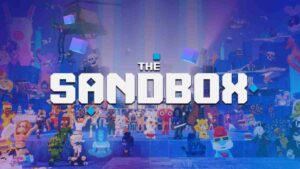Super B isn’t trying to be subtle. From the name to the party-style chaos, everything about this Web3 brawler is loud, fast, and deliberately unpredictable. It’s built for short bursts of multiplayer mayhem, with an economy layered on top.
Now, on June 26, the sixth round of community testing rolls out. And this one matters more than the previous five. This playtest is where Super B starts putting its token model into motion — not as a concept, but as an actual working system.
Community feedback continues to shape the core
Unlike many blockchain games that launch token-first and design later, Super B has taken a slower, test-and-learn approach. Each community playtest has focused on mechanics over monetization, and that pattern mostly continues here — with one key change.
This time, players who participate and complete missions can start earning $SUPER tokens. That makes the game’s economy visible for the first time, but it’s not open season yet. The goal is still iteration. Data gathered from this playtest will feed directly into how rewards, balancing, and item drops evolve.
It’s also worth noting that the project remains heavily community-guided. From Discord to test sessions, the dev team is treating these events as live focus groups.
Gameplay shifts toward more competitive PvP
Earlier versions of Super B leaned into party-style chaos, mixing PvE and PvP in free-for-all formats that felt more Mario Party than Tekken. But recent updates have nudged things in a different direction.
This sixth playtest will spotlight new PvP modes that demand tighter reflexes, faster decision-making, and actual match-to-match consistency. The idea seems to be separating casual brawling from ranked combat — not fully esports-ready, but heading in that direction.
From a design standpoint, Super B still keeps its cartoony, exaggerated tone. But underneath the goofy cosmetics and over-the-top powers, there’s now a visible effort to balance characters, set rules, and reward skill.
Blockchain layers are now more than backend
Until now, the Web3 layer in Super B was mostly in the background. Wallet integration was optional, and tokenomics stayed on the sidelines. With this new playtest, things begin to change.
Players will use their MetaMask or Sequence wallets to track $SUPER token earnings, which are tied to daily objectives and seasonal missions. These aren’t just bragging rights. They’re on-chain assets — although the full utility of $SUPER hasn’t been detailed yet.
There’s no open marketplace yet, but inventory management, ownership, and token-based unlocks are creeping into the experience. What’s still unclear is how much these elements will affect actual gameplay. For now, they’re cosmetic and progression-linked rather than pay-to-win.
Super B’s slow build stands out in a noisy space
Web3 games often push token launches, NFT sales, and staking rewards before a single mechanic is functional. Super B’s slower cycle, with six community tests before opening up its economy, feels almost old-school by comparison.
That may actually help it. Instead of trying to grab attention with speculative hype, it’s using each playtest as a checkpoint — iterating based on feedback, adjusting design choices, and only now introducing the token side in a meaningful way.
Whether that’s enough to stand out long term in a crowded brawler genre — and a skeptical crypto space — isn’t clear. But at the very least, Super B is taking its time to build something with actual gameplay under the hood. And in 2024, that’s not nothing.
Web3 Analyst & Play Blockchain Games Guide
CryptoKit breaks down Web3 gaming like it’s second nature. From tokenomics to airdrop strategies, she turns blockchain chaos into clear, actionable advice for players who want to win more than XP.




